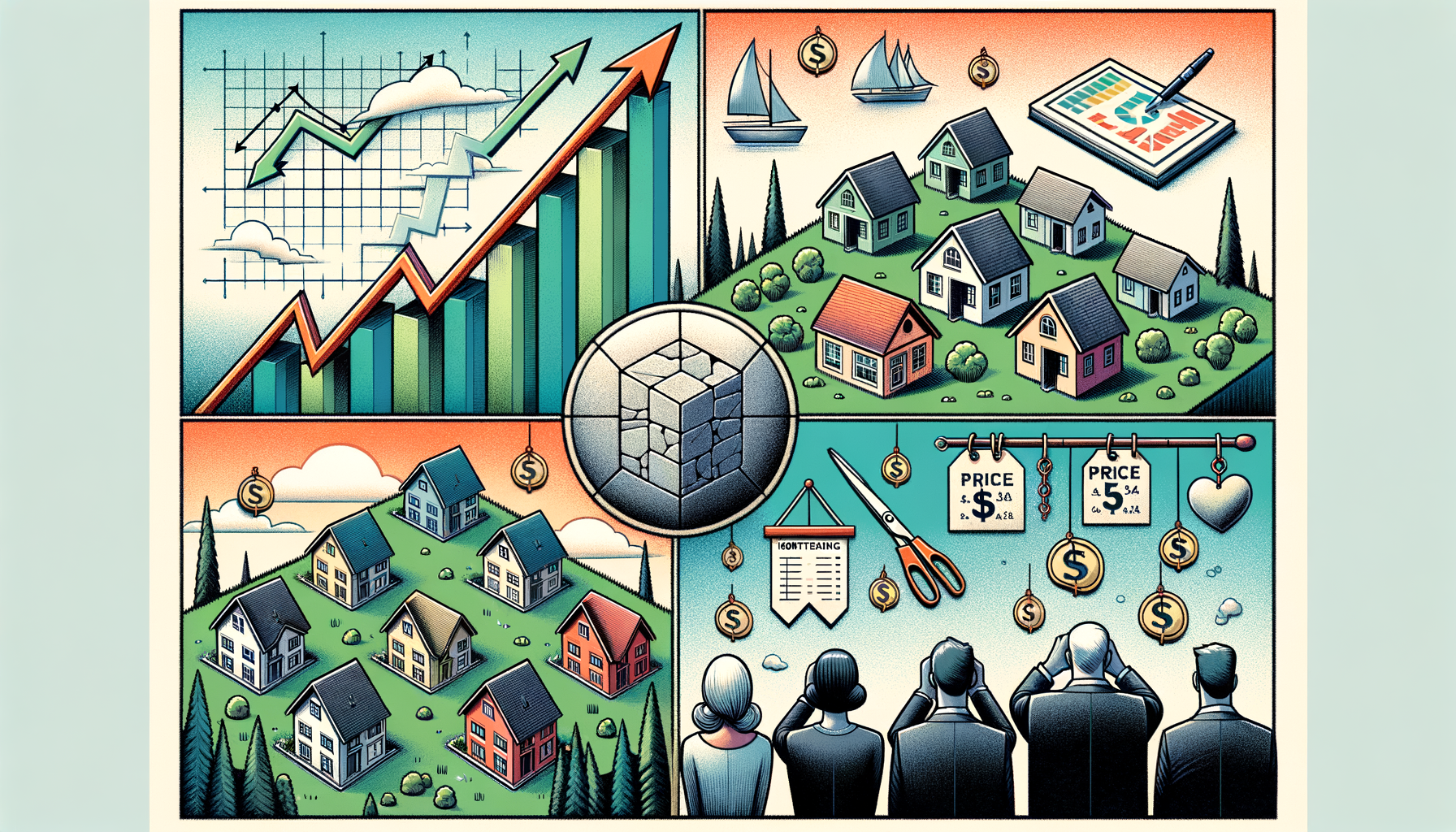“Emerging Trends: A Surge in Mortgage Rates, Inventory and Demand Amid Falling Price Cuts in Real Estate”

In recent times, notable changes have emerged in the real estate market, significantly impacting purchasing trends and conditions. Mortgage rates have shown an upward trajectory while the supply of housing units has seen an increase. Concurrently, the frequency of price cuts on home listings continues to decline.
According to data from the most reliable industry experts, a significant shift has been observed with mortgage interest rates experiencing a moderate increase. Even though it’s slight, this upward movement suggests a substantive change in trend considering the historic lows reached in 2020 due to the pandemic. However, compared to the all-time high rates of the past, current mortgage rates are significantly lower, making this an opportune time for potential homeowners to secure a home loan.
This surge in mortgage rates correlates to observed market trends that indicate more people are likely to buy new homes. Many experts had predicted a drastic decrease in demand for homes, citing the economic disruption due to COVID-19. But, in a surprising turn of events, more people are on the hunt for properties, leading to a buoyant market and a reduction in the likelihood of price cuts.
Analyzing market data, the decline in price cuts for houses on the market has been consistent. This decrease is largely attributed to sustained demand in the property market and an influx of buyers keen on securing property. Consequently, potential home buyers who had been waiting for massive price cuts may have to adjust their expectations.
The persistent demand for houses and the falling likelihood of price cuts indicates that the real estate market is stronger than anticipated. Despite the ongoing pandemic, economic uncertainties, and changing policies, the property market displays an impressive resilience that counters the general market logic.
Looking at the supply side, an increase has been recorded in housing inventory, a positive indicator for potential buyers. In the past year, the lack of available homes for sale had been a major issue, causing a surge in prices and bidding wars among interested parties. However, the recent increase indicates a possible softening of the market, providing a wider selection for buyers and allowing them to make more thoughtful decisions. Despite this increase, the housing inventory still falls short of satisfying the full demand of potential homebuyers.
In the broader real estate market, the continuous surge in buyer interest—an undoubtedly favorable buyer sentiment—is also challenging typical market dynamics. It’s reasonable to expect price reductions when there’s a concurrent rise in mortgage rates and the available housing inventory. Yet, the signs of resilience in the property sector point to a more complex interplay of factors.
Several additional elements merit consideration such as increased remote working trends driving demand. Amid the pandemic, corporations have switched to a remote work policy, leading to a surge in the demand for larger living spaces conducive to work-from-home setups. This emergent demand, coupled with historically low-interest rates, has helped to keep buyer sentiment emboldened, despite facing economic disruptions and uncertainties.
It’s also crucial to take into account the role of government stimulus packages in punchy buyer behavior. These financial aids have bolstered the purchasing power of many households, ensuring they remain active in the property market. This supportive economic measure has undoubtedly promoted resilience and vibrancy, which has helped to keep the property market stirring.
Looking at the consequential rise in home values, buyers should anticipate increased mortgage payments as rates ascend. In the current landscape, buyers will need to be agile and adaptable as they navigate the changes shaping the buying-and-selling dynamic within the real estate market.
The uncertainties in the broader economy have dictated caution, but the property market appears to be moving on its timeline. It’s critical to understand this reality—that real estate remains a viable asset, demonstrating value even amid decidedly challenging times. However, prospective buyers also need to consider their financial situation and the financing costs of any potential mortgage.
To navigate these evolving market dynamics, potential buyers are advised to closely monitor market trends and carefully strategize their real estate transactions. Similarly, sellers should continuously gauge buyer sentiment and adapt to changing market conditions to effectively capitalize on increased buyer interest.
In sum, the unfolding scenario involving rising mortgage rates, increased housing inventory and reduced price cuts is indicative of an increasingly sturdy real estate market. Contrary to initial gloomy forecasts, the sector exhibits unforeseen energy that is thriving amidst a pandemic, confronting traditional market norms.
This market resilience reflects the complex interplay of numerous factors including changes in socio-cultural tendencies, economic stimulus measures, and persistently low-interest rates. As such, buyers and sellers in this market must navigate carefully, understanding the interdependencies and effects of the many factors at play to ensure the best possible outcomes from their property transactions.
